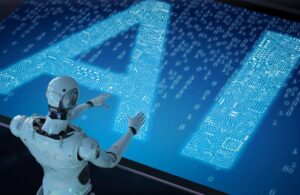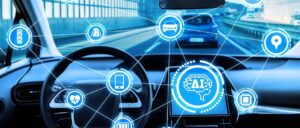Difference Between AI and Machine Learning: Understanding Key Concepts
Artificial Intelligence (AI) and Machine Learning (ML) are central to the technology shaping our world today. Though often used interchangeably, they are distinct concepts.
AI refers to the broad capability of computers to perform tasks that typically require human intelligence. On the other hand, ML is a subset of AI focusing on the use of algorithms to learn from and make predictions based on data.
Understanding their differences can help demystify how these technologies impact various sectors, from healthcare to finance.
AI encompasses a range of technologies, including machine learning, deep learning, and neural networks. It aims to simulate human thought processes and capabilities like reasoning and perception.
ML, a branch of AI, involves training algorithms to find patterns or trends in large data sets, allowing them to make decisions or predictions without direct human input. These tools can revolutionise operations, leading to more efficient systems and improved outcomes.
The rise of cognitive technologies like AI and ML brings along not just opportunities but also ethical considerations. Engaging with these technologies involves balancing their benefits with potential risks.
Readers will discover how these fields might evolve and the challenges they present, providing valuable insight into the future landscape of AI and ML.
Key Takeaways
- AI is the overarching technology that includes ML as a key component.
- ML uses algorithms to analyse data and make predictions.
- Both AI and ML have significant impacts across various industries.
Defining AI and Machine Learning
Artificial Intelligence (AI) and Machine Learning (ML) play key roles in advancing technology. AI mimics human cognitive functions, whereas ML, a subset of AI, focuses on identifying patterns from data.
The Concept of Artificial Intelligence
Artificial Intelligence refers to systems capable of tasks that typically require human intellect. These include problem-solving, decision-making, and even aspects of creativity and perception.
AI leverages algorithms and vast data sets to automate tasks, often resulting in efficiency gains. It is foundational in fields like robotics, natural language processing, and autonomous vehicles where automation and intelligent decision-making are crucial.
AI systems may employ rule-based approaches or adaptive methods that modify their behaviour through experience and feedback, enhancing their problem-solving abilities.
Understanding Machine Learning
Machine Learning is a pivotal aspect of AI, focusing on developing algorithms that can analyse large amounts of data to identify patterns and make predictions. It operates under three main frameworks: Supervised Learning, where models learn from labelled data; Unsupervised Learning, which deals with unlabelled data to detect hidden patterns; and Reinforcement Learning, where models learn by receiving feedback from their actions in an environment.
ML has numerous applications, from image recognition to personalised marketing strategies. Its ability to improve predictions and adapt over time makes it essential in navigating complex data-driven scenarios.
Subdisciplines of AI: Focusing on Machine Learning
Within AI, Machine Learning holds a significant position. It is supported by Deep Learning and Neural Networks, both of which enhance its adaptability and sophistication in handling data.
Deep Learning mimics human brain structures through multilayered neural networks, enriching the learning process by working with intensive data tasks. These subcategories broaden ML’s role within AI by enabling it to tackle more intricate problems. Neural networks are instrumental in areas like voice and image processing, propelling AI systems to achieve human-like perception and response capabilities.
Practical Applications of AI and ML
Artificial Intelligence and Machine Learning are transforming various aspects of daily life and industry. From powering chatbots to improving healthcare, these technologies are advancing efficiency and innovation.
AI in Everyday Life
AI applications have become integral to day-to-day life, enhancing convenience and productivity.
Chatbots, powered by Natural Language Processing (NLP), provide customer support across numerous platforms, offering quick and efficient responses.
Smart home devices like speakers and thermostats use AI to adapt to user preferences, improving comfort and energy management.
Cybersecurity uses AI for intrusion detection systems and real-time monitoring to protect data from potential threats.
Healthcare benefits from AI through medical imaging analysis, diagnosis support, and patient management systems. These applications underscore AI’s broad impact on daily routines and essential services.
Machine Learning in Industry
Machine Learning (ML) is a driving force in transforming industries by unlocking the potential of big data and predictive modelling.
In manufacturing, ML improves processes through automation and quality control, reducing errors and downtime.
Retailers utilise ML to personalise recommendations, manage inventory, and optimise pricing strategies, enhancing customer experience and profitability.
Financial services leverage ML for fraud detection, identifying unusual patterns in transactions to prevent losses.
In healthcare, ML aids in predicting patient outcomes and tailoring personalised treatment plans. The integration of ML solutions in these sectors reveals its critical role in boosting efficiency and fostering innovation.
The Science and Technology Behind AI and ML
Artificial Intelligence (AI) and Machine Learning (ML) rely on several core technologies involving neural networks, data science, algorithms, and specific programming languages. These elements work together to facilitate intelligent systems that can learn from data and perform various tasks.
Neural Networks and Deep Learning
Neural networks are inspired by the human brain. They consist of artificial neurons that process information and learn patterns.
Deep learning is a type of neural network with multiple layers that can recognise complex features and structures.
By layering, these networks can handle tasks like image and object recognition. They are crucial in various applications, from natural language processing to automated driving. Their ability to learn from vast amounts of data makes them indispensable in AI.
Data Science: The Foundation
Data science is the backbone of AI and ML. It involves collecting, analysing, and interpreting data to build insightful models.
Data scientists use big data to understand patterns, which help in making informed decisions.
Data-driven insights rely on robust data analysis techniques. With tools like machine learning, data science becomes transformative, providing businesses with the intelligence to predict trends and behaviours. The role of data cannot be overstated in the development of AI technologies.
Algorithms: The Building Blocks
Algorithms are vital to AI and ML as they define how machines learn and make decisions. They enable pattern recognition by processing input data and adjusting to new information over time.
Different algorithms suit various tasks. For instance, supervised learning algorithms excel in designated tasks where data labels are available. Others, like unsupervised learning algorithms, help in exploring hidden patterns in unlabelled data. Choosing the right algorithm is essential for successful AI applications.
Programming Languages in AI and ML
Programming languages are the tools that developers use to create AI and ML models.
Python is one of the most popular choices because of its simplicity and a wide range of libraries. Libraries like TensorFlow and PyTorch offer pre-built functions for neural networks and deep learning.
R is also popular, especially in statistical analysis and data visualisation. These languages enable developers to experiment and innovate, writing code that can solve complex problems in AI.
Cognitive Technologies
Cognitive Technologies integrate AI concepts like Natural Language Processing, Computer Vision, and Generative AI to automate and enhance human tasks. These technologies facilitate interaction with unstructured data and offer varied applications ranging from language understanding to image analysis.
NLP and Speech Recognition
Natural Language Processing (NLP) is a branch of cognitive technologies that enables machines to understand and respond to human language. NLP works with unstructured data to facilitate translation, sentiment analysis, and text summarisation.
Speech recognition involves converting spoken words into text. This helps in creating systems like virtual assistants, which can interpret and execute voice commands. In industries, these tools enhance customer service, allowing machines to respond intelligently to user queries.
Both NLP and speech recognition rely on machine learning algorithms to improve accuracy over time. They are vital for creating seamless human-computer interactions.
Computer Vision
Computer Vision focuses on enabling machines to interpret and make decisions based on visual data. By using image recognition, machines can identify objects, people, actions, and scenes in images or videos.
This technology is crucial in various fields, including healthcare for medical imaging analysis and in autonomous vehicles for recognising road signs and obstacles.
The ability to understand and process images helps in automating inspection in manufacturing, ensuring higher accuracy and efficiency. Computer Vision’s effectiveness depends on training algorithms with extensive datasets to recognise diverse patterns and objects.
Generative AI
Generative AI is a fascinating branch that involves creating new content from learned data patterns. It uses models like GANs (Generative Adversarial Networks) to generate images, text, and even music.
This technology finds applications in creative fields, aiding in tasks from designing graphics to writing content. Generative AI also helps in simulating realistic scenarios for training AI systems.
By learning from the unstructured data, these models can produce outputs that are indistinguishable from human creations. It’s a promising area for expanding creative possibilities and providing solutions for real-world challenges.
Levels of Artificial Intelligence
Artificial Intelligence is categorised into levels that reflect the scope and capabilities of AI systems. It ranges from systems that perform narrowly defined tasks to those with a broad understanding similar to human cognitive abilities.
Weak AI vs Strong AI
Weak AI, or Narrow AI, focuses on specific tasks such as language translation or facial recognition. These systems rely on rule-based methods or specific models to perform pre-defined functions effectively. They’re prevalent in technologies like voice assistants and recommendation systems, where robots are not expected to perform beyond their programming constraints.
In contrast, Strong AI aims to replicate human-like cognition by understanding, reasoning, and learning from experience. Though theoretical at this stage, it represents a future where AI can perform any cognitive task that a human can, integrating emotions, consciousness, and self-awareness. Strong AI is also known as Artificial General Intelligence (AGI), which aims to mimic general human intelligence.
From ANI to AGI and ASI
Artificial Narrow Intelligence (ANI) refers to AI systems skilled at performing one specific task. Most AI applications today, like virtual personal assistants or image recognition software, fall into this category. They operate under stringent constraints without adapting to unfamiliar tasks outside their programmed expertise.
Artificial General Intelligence (AGI) denotes AI with a broader cognitive understanding comparable to human intelligence. It can apply learned knowledge flexibly across various domains. AGI remains a theoretical goal, advancing beyond the specialised task approach of ANI.
Artificial Super Intelligence (ASI) represents the next frontier. It theorises an intelligence that surpasses human intellect and capabilities in all aspects. ASI could potentially outperform humans in creativity, problem-solving, and social intelligence. While a profound concept, it remains speculative with significant ethical considerations.
Ethical Considerations and Future Trends
Ethics in AI and machine learning have become central topics. The development of AI systems demands a balance between innovation and moral responsibility. Looking ahead, the future trends suggest significant advancements and possible challenges on the horizon.
Ethics in AI
Ethics play a crucial role in shaping artificial intelligence. AI systems are increasingly making decisions that impact human lives, from healthcare to finance. It’s essential to prioritise transparency and accountability in AI algorithms.
One big ethical concern is bias. AI systems learn from data, which might contain biases. This can lead to unfair treatment of individuals or groups. Ensuring that AI systems are fair and unbiased requires careful consideration in their design.
Privacy is another ethical concern. AI systems often handle vast amounts of personal data. Protecting this data is vital to prevent misuse and maintain trust.
The Future of AI and Machine Learning
The future of AI and machine learning holds exciting possibilities. As technology continues to evolve, AI is expected to become more integrated into daily life. This includes smarter homes, advanced healthcare, and personalised learning experiences.
Predicting future trends, AI will likely see collaboration between humans and machines. Such collaboration could improve efficiency and innovation across various sectors. Yet, this progress brings challenges, such as ensuring AI systems are ethical and manageable.
Adapting to these changes will require new skills and education. Developing AI literacy among the workforce is essential to navigate this rapidly changing landscape. Governments, educators, and industry leaders all play a role in preparing societies for these advancements.
Challenges and Opportunities in AI and ML
AI and Machine Learning present both challenges and opportunities in today’s technological landscape. Challenges include data quality and bias, while opportunities lie in driving innovation and enhancing operational efficiency.
Challenges in the Field
AI and Machine Learning face several significant challenges. Data quality is a primary concern as models rely heavily on accurate data for effective results. Poor data quality can lead to unreliable predictions, affecting the model’s performance.
Bias is another critical issue. When models are trained on biased data, they can generate skewed results, leading to unfair outcomes across various applications. This bias can harm customer satisfaction and restrict AI’s potential benefits.
Additionally, ethical considerations also present challenges. Ensuring privacy and security while using personal data is crucial. As AI systems become more autonomous, accountability for errors or unintended consequences must be addressed.
Opportunities for Innovation
Despite the challenges, AI and Machine Learning offer numerous opportunities for innovation. These technologies are enhancing operational efficiency by automating routine tasks, allowing businesses to optimise resources and reduce costs. They expedite decision-making processes by providing critical data insights quickly.
AI creates opportunities for personalisation in areas like marketing and customer service, increasingly tailoring products and experiences to individual needs. This capability enhances customer satisfaction through more relevant and engaging interactions.
Innovation in healthcare through AI offers opportunities to improve diagnostics, personalised medicine, and patient care outcomes. In industries such as transportation, AI is advancing autonomous vehicles, increasing safety and reducing human error. The potential for innovation in AI and Machine Learning is vast, offering exciting prospects across various fields.
Frequently Asked Questions
Artificial intelligence (AI) and machine learning (ML) are often confused in discussions about technology. While they overlap, AI is the broader concept, and ML is a specific approach within AI. Different elements such as deep learning and generative AI further distinguish these technologies.
What distinguishes artificial intelligence from machine learning?
Artificial intelligence is a broad field aiming to create systems that simulate human intelligence. Machine learning, a subset of AI, focuses on using data and algorithms to allow systems to learn and improve from experience without being explicitly programmed.
How does machine learning differ from deep learning within AI?
Machine learning uses algorithms to find patterns in data and make decisions. Deep learning, a specialised area of ML, employs neural networks with many layers to analyse complex data. This approach enables more advanced applications, such as image and speech recognition.
Could you give an example of AI that does not involve machine learning?
An example of AI without machine learning is rule-based systems. These systems perform automated tasks based on predefined rules. Although they can simulate certain intelligent behaviours, they do not learn or adapt like machine learning models.
In what ways does generative AI vary from traditional machine learning?
Generative AI creates content such as images, music, or text by predicting patterns in data. Traditional machine learning is often focused on classification and prediction tasks. Generative AI uses more advanced models, like generative adversarial networks, to produce more creative outputs.
Can you define the characteristics of AI that are absent in machine learning?
AI systems can include reasoning, natural language processing, and perception. These characteristics go beyond learning and adapting, which is the primary focus of machine learning. AI aims to perform tasks in a way that an intelligent human might.
What are the career prospects like in the fields of Artificial Intelligence and Machine Learning?
Careers in AI and ML are growing rapidly as demand for skilled professionals increases. Roles include data scientists, AI researchers, and machine learning engineers.
With technological advancements, these fields offer varied opportunities in industries like healthcare, finance, and robotics.





















